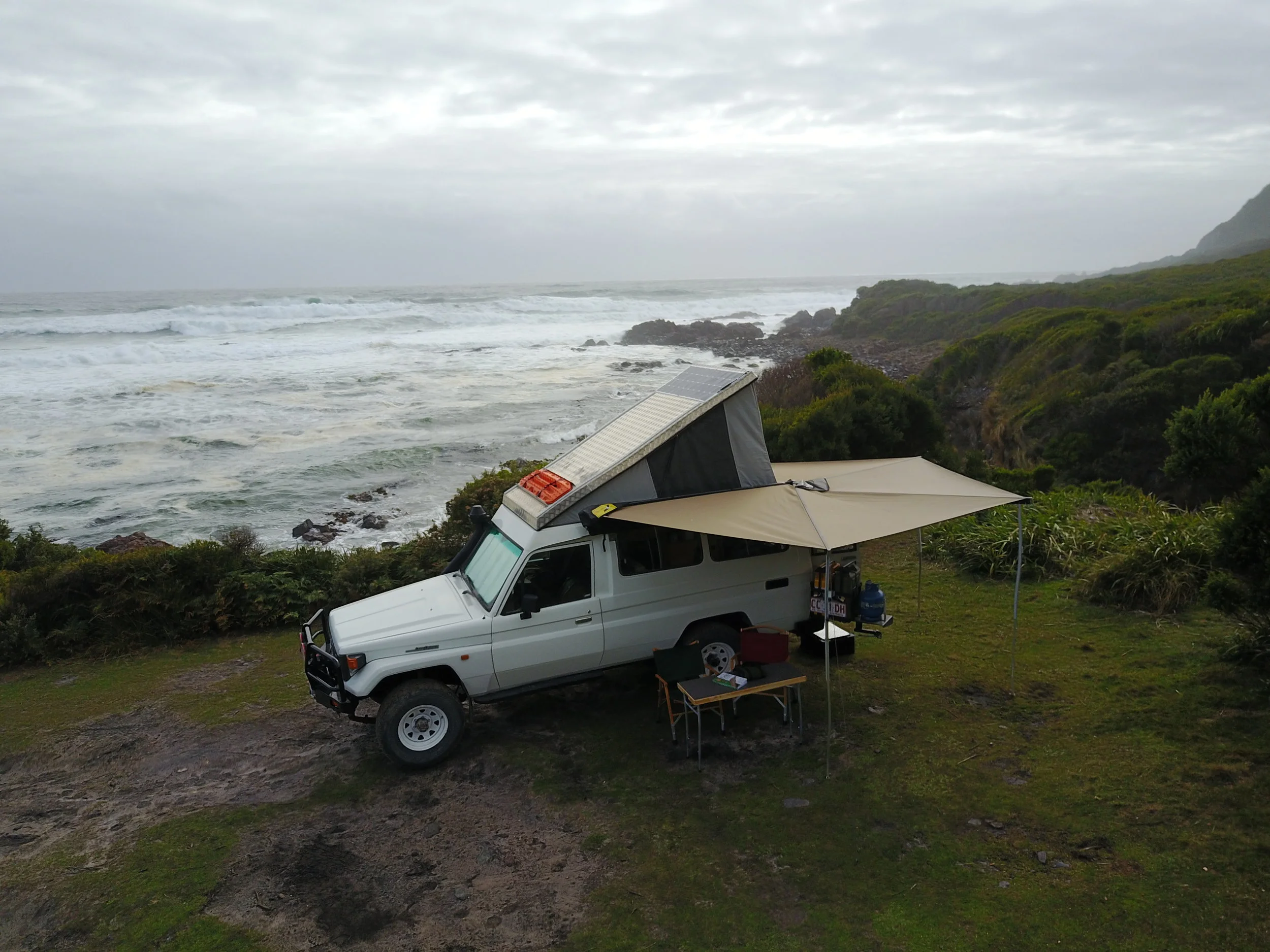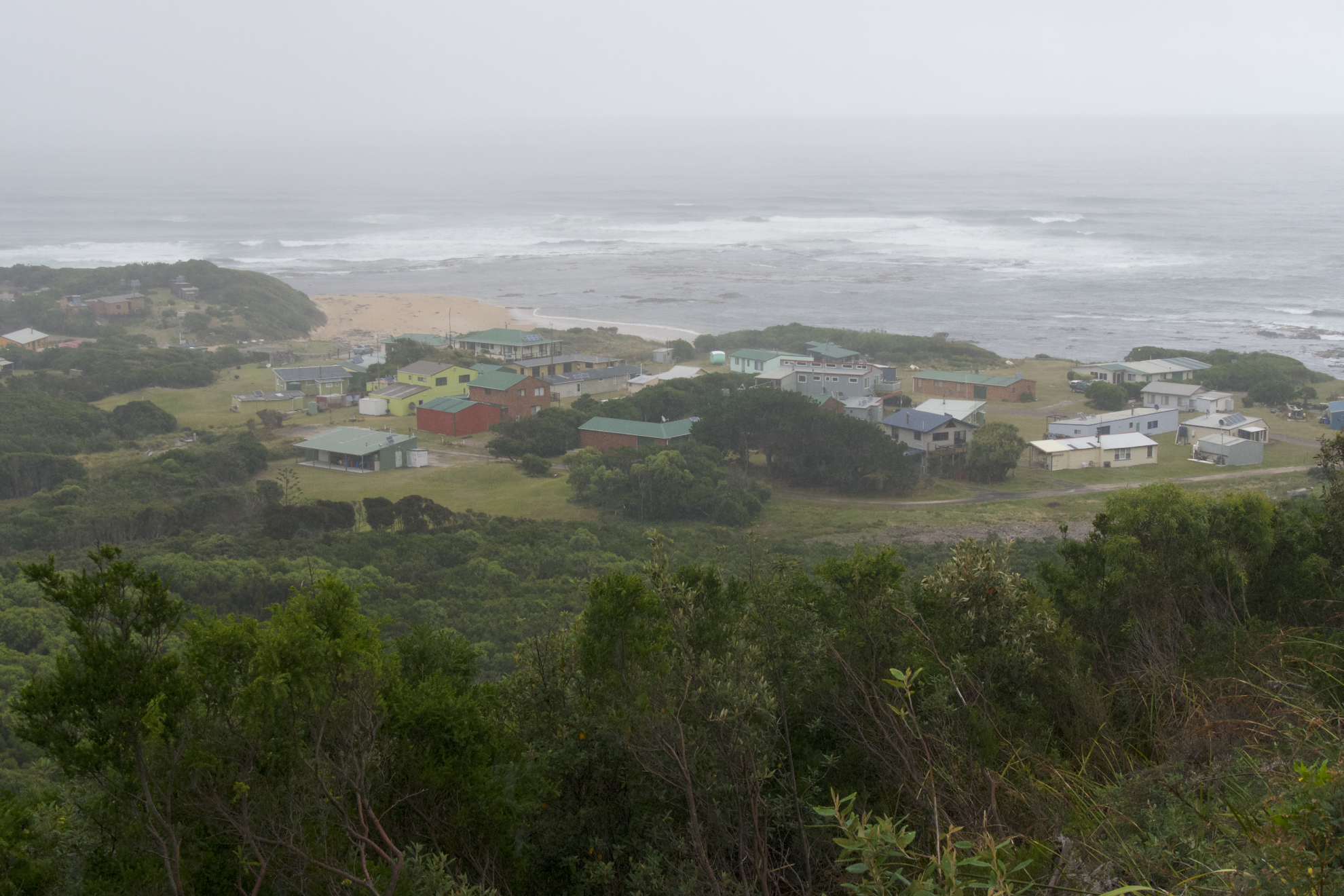
Overland Tech and Travel
Advice from the world's
most experienced overlanders
tests, reviews, opinion, and more
Decisions . . .
It was getting late in the afternoon of what had been a long day driving down the west coast of Tasmania. We were exhilarated but looking forward to camp, sundowners, and dinner.
We had two choices. Our map showed a developed campground near Zeehan, just a few minutes away. We’d found these surprisingly nice in Tasmania, with decently spaced sites and good facilities—not bad for a transit stay as we needed. We could be set up and relaxing with plenty of daylight left.
However, the map also showed an intriguing spot on the coast called Trial Harbor, about 25 kilometers down a winding road. But it would add at least an hour to the day, and while our map indicated there was camping available, it gave no further information. We’d have to chance that there would be a spot left.
How often have many of us faced similar dilemmas? It was a close call, but the coast beckoned, so we turned off the C249 and headed west. The road was convoluted but, at first, surfaced, and it immediately dived into a verdant eucalyptus forest. There was a heart-stopping moment when an echidna ambled out in front of us and the Troopy’s brakes—all disc but still less than superb—barely spared the spiny little thing as it did a slow U-turn and waddled back into the undergrowth. Then we broke out into open hills fringed with massive forests blanketing the slopes. The surface turned to gravel, and with zero opposing traffic we wound our way into shaded ravines and out and up again under fast-moving clouds.
The detour had already proven its worth, but then we turned a corner, topped a rise, and beheld the Southern Ocean stretched in front of us, surprisingly only 50 meters below. Whitecaps hyphened the sea into distant windblown salt mist—sail west from here and your next landfall would be Tierra del Fuego; head south and only icebergs would prevent you running into Antarctica.
A sparse scattering of red and green prefab houses clustered behind the breakers—we later learned that Trial Harbor boasts 19 permanent residents. But camping? A hand-lettered sign pointed right. We followed it down a muddy single-track through the brush, spray from waves nearly misting the windscreen. And then there were openings, and a few campers: a Troopy with a pop-top remarkably similar to ours, a Mitsubishi Delica van—and a miraculous open space at the very end of the track, out of sight of anyone. The ocean crashed on to a rocky beach one wrong sleepy step below, and—more miracles—a gin-clear brook tumbled out of the hills just over a rise behind us. Incredulous, we raised the Troopy’s roof, staked out the Eezi-Awn Bat awning, and went looking for where to pay. There was nowhere to pay, just a clean outhouse reached via a charming wooden bridge, and another hand-lettered sign directing us to the “Ringing Rock”—an F350-sized boulder on the beach, decorated with ancient circular Aboriginal carvings, and which, when tapped with a small rock, rang like a metallic gong. (We found out later these are called lithophones, and are know from anthropological sites around the world.)
Back at the Troopy, we had a visit from fellow campers, a hilarious couple of gay Australian men in their 60s, who joked about whose turn it was to play “wife” and wash dishes or fetch water. I broke out the rum and mixed Dark’n’Stormies—appropriate given the setting—Roseann grilled the lamb we’d kept frozen from the superb Springbok’s Delight butcher shop in Sydney, and I played “wife” and washed up before we gazed up one last time at the Southern Cross winking in and out of view behind the clouds. The crashing surf became white noise as we drifted off to sleep.
Before we left next morning, we visited the town’s museum, run by resident Shirley Smith. It was a one-room marvel crammed with photos, memorabilia, and history from Trial Harbor’s early and recent days, along with the occasional curiosity such as the giant sunfish eyeball floating in a jar of formaldehyde. Cost? No cost, just a donation box. We left a lot, then turned the Land Cruiser back up the winding road, taking one last look as the colored houses of Trial Harbor faded into the ocean mist.
The moral of the story? I’m sure you’ve guessed it by now.
Take the road.
Hint: When using “Search,” if nothing comes up, reload the page, this usually works. Also, our “Comment” button is on strike thanks to Squarespace, which is proving to be difficult to use! Please email me with comments!
Overland Tech & Travel brings you in-depth overland equipment tests, reviews, news, travel tips, & stories from the best overlanding experts on the planet. Follow or subscribe (below) to keep up to date.
Have a question for Jonathan? Send him an email [click here].
SUBSCRIBE
CLICK HERE to subscribe to Jonathan’s email list; we send once or twice a month, usually Sunday morning for your weekend reading pleasure.
Overland Tech and Travel is curated by Jonathan Hanson, co-founder and former co-owner of the Overland Expo. Jonathan segued from a misspent youth almost directly into a misspent adulthood, cleverly sidestepping any chance of a normal career track or a secure retirement by becoming a freelance writer, working for Outside, National Geographic Adventure, and nearly two dozen other publications. He co-founded Overland Journal in 2007 and was its executive editor until 2011, when he left and sold his shares in the company. His travels encompass explorations on land and sea on six continents, by foot, bicycle, sea kayak, motorcycle, and four-wheel-drive vehicle. He has published a dozen books, several with his wife, Roseann Hanson, gaining several obscure non-cash awards along the way, and is the co-author of the fourth edition of Tom Sheppard's overlanding bible, the Vehicle-dependent Expedition Guide.






